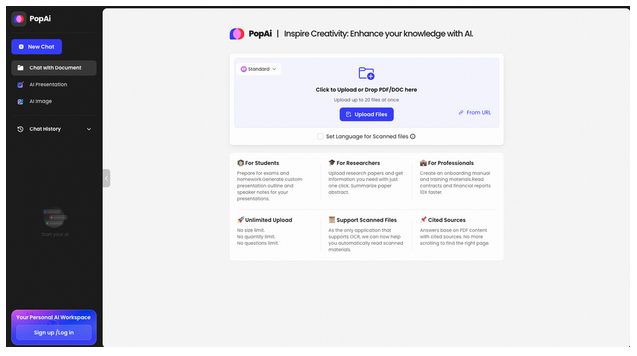Proofreading and editing are critical steps when creating high-quality written content. After spending hours researching and drafting an article, it can seem tedious to go back through the entire piece multiple times to check for errors or areas needing improvement.
However, neglecting the proofreading process leads to mistakes and unclear writing slipping through the cracks. Investing sufficient time and effort into proofreading ultimately results in more polished, readable content as well as building better writing habits.
This article will explore common proofreading pitfalls to avoid as well as techniques both manual and using AI tools for efficiently improving articles.
Common Proofreading Mistakes to Avoid
Even experienced writers make basic proofreading errors that impact article quality. Being aware of these issues can help ensure putting in the necessary work to properly check writing before publication.
Proofreading on the Same Day as Writing
After powering through composing an article, authors often want to quickly proofread and be done. However, flawed content has a tendency to still make complete sense to the fatigued writer who just finished.
Letting fresh eyes examine the draft allows catching more problems compared to reviewing immediately. Sleeping in between writing and proofreading engages the brain’s ability to unconsciously process during rest.
People can then detect weak phrases, awkward sentences, logical gaps, and other issues much easier upon revisiting the next day.
Relying on Spell-check Only
Modern word processing programs feature spell checking functions which are useful basic editing tools. Simply running spell-check can correctly fix typos of non-words but overlook issues with properly spelled but contextually wrong selections.
It entirely misses catching grammatical problems, unclear writing needing reorganization, factual inaccuracies from research requiring double-checking, and more.
Solely relying on automated spell checking gives both the writer and subsequent readers a false sense the draft is error-free. Human insight paired with reading word-for-word cannot be replaced digitally.
Effective Proofreading Techniques
The most reliable methods for thoroughly proofreading involve stretching the process over time and using tactics leveraging innate mental functions. Being methodical when editing maximizes catching all types of issues.
Reviewing in Stages
Reading through once from start to finish rarely uncovers all necessary revisions no matter the length. Breaking down proofreading into multiple sessions over hours, days, or weeks is more productive depending on article size.
Initially focus on only some aspects like formatting, paragraph transitions, or word overuse instead of attempting everything simultaneously. Later phases can concentrate separately on flow, fact accuracy, tightening language, checking statistics, strengthening hook sentences, and so on in stages.
This divides an otherwise overwhelming chore into smaller, more effective pieces attacking a single element across all sections.
Reading Aloud
Hearing text out loud activates different mental processes than silent reading. Spoken words must be individually processed in real time rather than eyes skimming unconsciously over groups.
Reading aloud forces slowing down to the pace of speech and frequently stumbling on awkward wording. Listening highlights disjointed phrasing, comprehension difficulties, and poor flow. Sections making perfect sense silently suddenly seem unclear when spoken.
This technique pinpoints areas needing smoothing out, lower grade level vocabulary, clarifying statements, and basic rewrites. Users hear what needs improvement through hearing words vocalized individually.
Taking Breaks
Proofreading is taxing mental work even in short doses. Pushing through leads to reader fatigue which allows more mistakes to sneak by unnoticed. Stepping away briefly after concentrated effort for as little as five minutes allows mental resetting.
Breaks provide opportunity for Inception-like “idea planting” where the brain recognizes inconsistencies, contradictions, incongruences when distracted from consciously deliberating. Upon returning rejuvenated after a break, problems once glossed over seem glaringly obvious. Spread proofreading out intermixed with breaks for optimizing the search for errors.
Using AI Tools for Efficient Proofreading
Recently, automated proofreading programs have emerged applying artificial intelligence to streamline improving article drafts. These AI tools maximize human editing efforts for quality and efficiency.
The main advantage AI proofreading brings is performing initial error detection so people can then more precisely address flagged sentences. Software instantly processes what takes much longer manually searching entire articles. Machine learning algorithms rapidly scan sentence structures, phrasings, word use contexts, and grammar conventions.
Multiple technology companies now offer online AI-powered proofreading programs. Among top selections are Grammarly, Hemingway, Ginger Software, and ProWritingAid based on capabilities, user-friendliness, and value.
PopAi goes beyond basic spell/grammar checking to provide smart suggestions and identify areas for improving clarity, flow, readability, and engagement. Users can upload article drafts for PopAi's
AI pdf reader to scan and highlight proposed revisions. What sets PopAi apart is the ability to then chat with documents by asking questions about flagged sentences and getting plain English explanations.

Conclusion
Proofreading is often pushed aside as insignificant or rushed without best practices for hitting quality bars. Common bad habits include only spell checking or cramming editing. More reliable techniques involve staging over multiple passes, reading aloud, and taking mental breaks.
Combining manual and automated methods leads to finding more issues pre-publication. Allowing proper time for concentrated proofreading techniques, whether using traditional means or augmented with AI, results in superior articles worth publishing.
